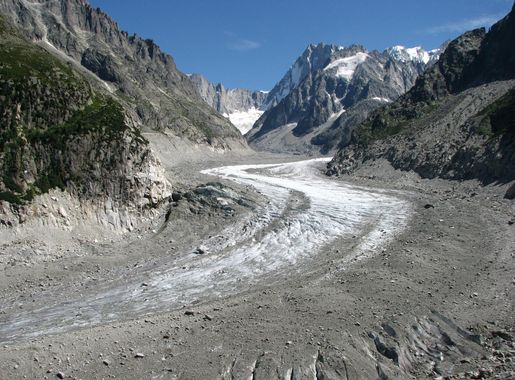
The Alpine Charm of Chamonix
Discover Chamonix, the gateway to Mont Blanc, where thrilling alpine adventures meet charming French culture in a breathtaking mountain setting.
Nestled in the heart of the French Alps, Chamonix is a haven for mountain lovers and adventure seekers alike. This picturesque town lies at the foot of Mont Blanc, Europe’s highest peak, offering breathtaking views that captivate visitors from the moment they arrive. Known for its world-class ski resorts, Chamonix attracts skiers and snowboarders from around the globe during the winter months. The slopes range from beginner-friendly to challenging runs, ensuring there’s something for everyone. In the summer, Chamonix transforms into an outdoor playground with endless possibilities for hiking, climbing, and mountain biking. The town itself is charming, with cobbled streets, quaint shops, and cozy cafes where you can unwind after a day of adventure. Don't miss the Aiguille du Midi cable car, which takes you to an altitude of 3,842 meters for a panoramic view of the surrounding peaks and valleys. Chamonix is not just about adrenaline-pumping activities; it also offers a rich cultural experience. The Alpine Museum provides insights into the region's history and mountaineering heritage. Meanwhile, the local cuisine, featuring hearty Savoyard dishes like fondue and raclette, is a treat for the taste buds. Whether you’re seeking thrill or tranquility, Chamonix has something to offer every traveler.
Local tips in Chamonix
- Visit in early December or late March for fewer crowds and great skiing conditions.
- Make sure to book your Aiguille du Midi cable car tickets in advance, especially during peak season.
- Wear layers, as the weather in the mountains can change quickly.
- Try local specialties like tartiflette and fondue at a traditional Savoyard restaurant.
- Explore the lesser-known trails for a more peaceful hiking experience.
The Alpine Charm of Chamonix
Nestled in the heart of the French Alps, Chamonix is a haven for mountain lovers and adventure seekers alike. This picturesque town lies at the foot of Mont Blanc, Europe’s highest peak, offering breathtaking views that captivate visitors from the moment they arrive. Known for its world-class ski resorts, Chamonix attracts skiers and snowboarders from around the globe during the winter months. The slopes range from beginner-friendly to challenging runs, ensuring there’s something for everyone. In the summer, Chamonix transforms into an outdoor playground with endless possibilities for hiking, climbing, and mountain biking. The town itself is charming, with cobbled streets, quaint shops, and cozy cafes where you can unwind after a day of adventure. Don't miss the Aiguille du Midi cable car, which takes you to an altitude of 3,842 meters for a panoramic view of the surrounding peaks and valleys. Chamonix is not just about adrenaline-pumping activities; it also offers a rich cultural experience. The Alpine Museum provides insights into the region's history and mountaineering heritage. Meanwhile, the local cuisine, featuring hearty Savoyard dishes like fondue and raclette, is a treat for the taste buds. Whether you’re seeking thrill or tranquility, Chamonix has something to offer every traveler.
When is the best time to go to Chamonix?
Iconic landmarks you can’t miss
Compagnie du Mont Blanc
Discover the breathtaking Aiguille du Midi in Chamonix, where stunning alpine views and adventure await at the heart of the French Alps.
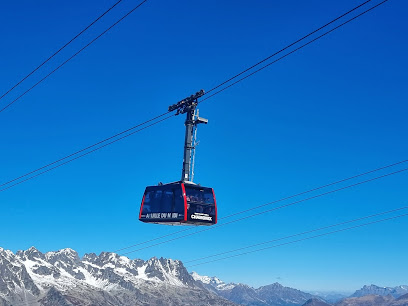
Le Pas dans le Vide
Discover breathtaking views and a unique experience at Le Pas dans le Vide, the glass observation deck in Chamonix overlooking Mont Blanc.
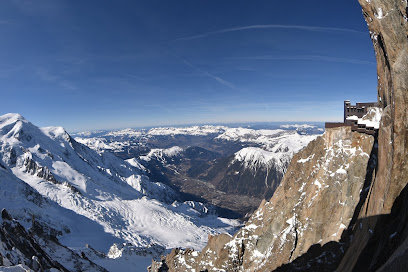
Mer de Glace
Explore Mer de Glace, France's largest glacier, and immerse yourself in the breathtaking beauty of Chamonix's alpine landscape.
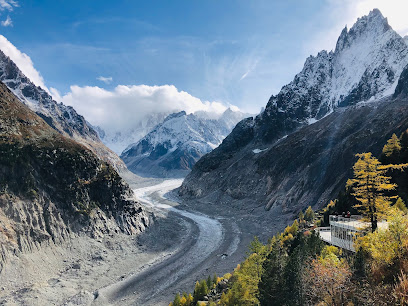
Grotte de glace
Explore the breathtaking Grotte de Glace, an ice cave in the stunning Mont Blanc region, offering natural beauty and unforgettable alpine adventures.
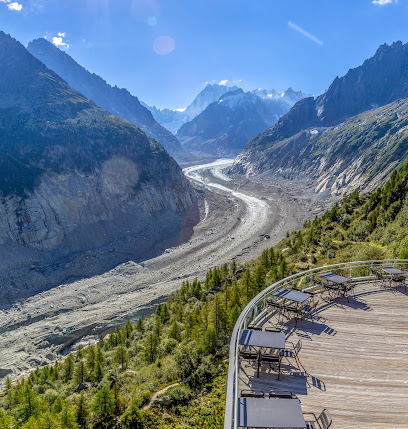
Musée Alpin Chamonix
Discover the alpine heritage and vibrant history at Musée Alpin Chamonix – the heart of Chamonix-Mont-Blanc's cultural landscape.
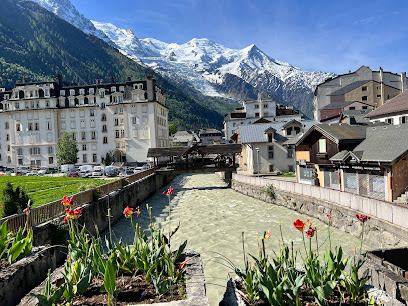
Statue of Balmat and Saussure
Explore the inspiring Statue of Balmat and Saussure in Chamonix, a tribute to the pioneers of Mont Blanc's first ascent amidst stunning alpine scenery.
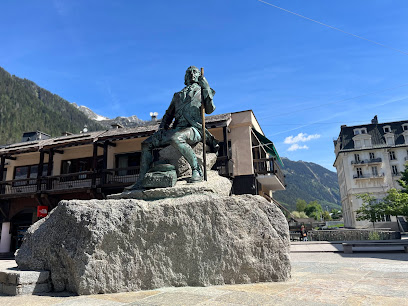
Paccard statue
Discover the Paccard Statue in Chamonix-Mont-Blanc: a captivating tribute to alpine craftsmanship amidst breathtaking mountain scenery.
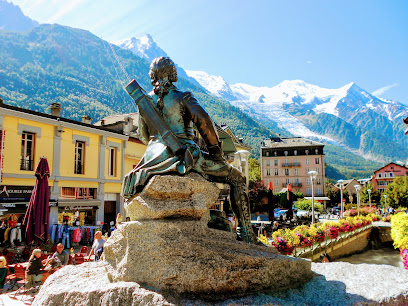
Grand Balcon Nord, Chamonix
Discover stunning views and unforgettable hiking experiences at the Grand Balcon Nord in Chamonix, a paradise for nature lovers and adventure seekers.
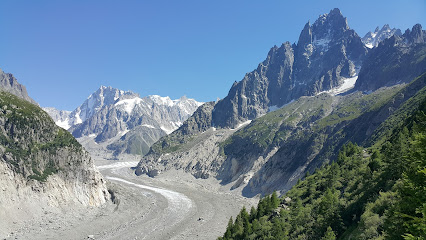
Av. Michel Croz
Explore Av. Michel Croz in Chamonix-Mont-Blanc, where stunning alpine views meet charming shops and delightful dining experiences.
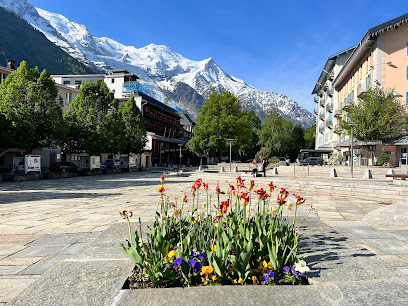
Point de vue sur L'Arveyron
Experience the stunning alpine beauty at Point de vue sur L'Arveyron in Chamonix-Mont-Blanc, a must-visit viewpoint for every traveler.
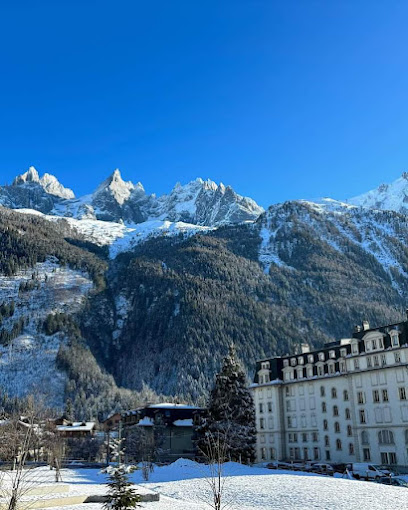
Rue Joseph Vallot
Experience the picturesque Rue Joseph Vallot in Chamonix-Mont-Blanc, a charming street filled with shops, cafés, and stunning alpine views.
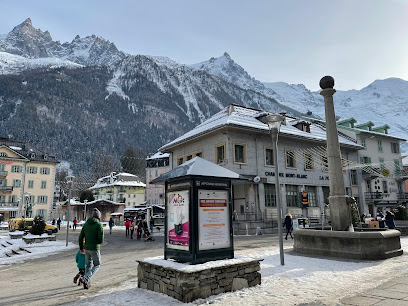
Place du Poilu
Experience the serene beauty of Place du Poilu, a picturesque park in Chamonix-Mont-Blanc, where nature and tranquility meet against stunning alpine views.
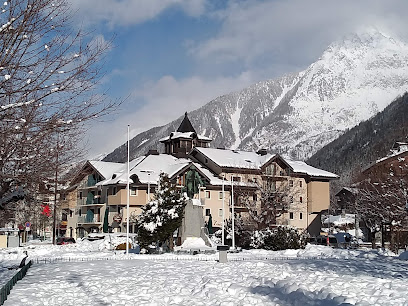
Unmissable attractions to see
QC Terme Pré Saint Didier
Discover relaxation and rejuvenation at QC Terme Pré Saint Didier, a luxurious spa retreat in the heart of Aosta Valley's stunning natural beauty.
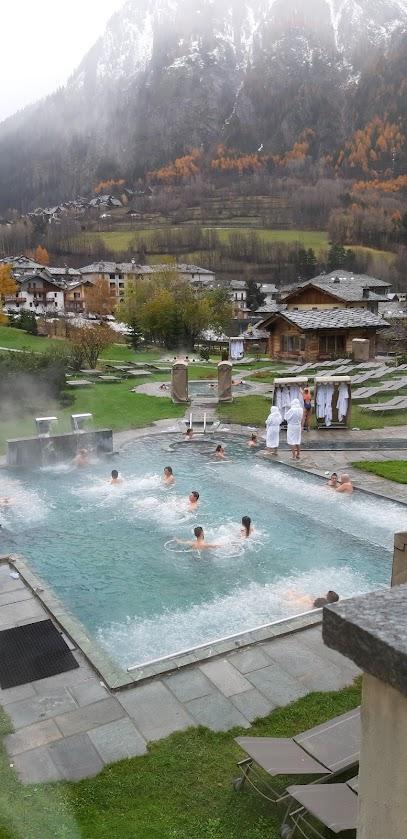
Les Arcs
Experience the thrill of skiing and the beauty of hiking at Les Arcs, a premier destination in the French Alps for outdoor adventures year-round.
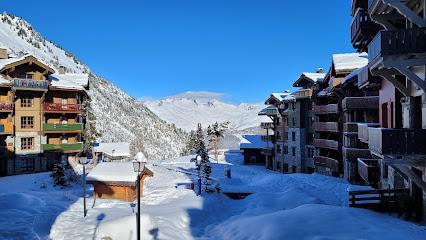
Parc de Merlet
Explore the breathtaking Parc de Merlet, a unique animal park offering stunning views of Mont Blanc and a chance to see native wildlife in their natural habitats.

Office de Tourisme de Chamonix-Mont-Blanc
Explore the breathtaking wonders of Chamonix-Mont-Blanc with expert advice from the Office de Tourisme, your gateway to unforgettable alpine experiences.
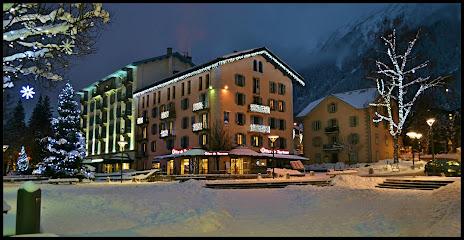
La Folie Douce Les Arcs
Experience the perfect blend of gourmet dining and lively entertainment at La Folie Douce Les Arcs, a must-visit alpine destination in the French Alps.

Criptoportico Forense
Explore the timeless beauty and historical significance of the Criptoportico Forense, a must-visit ancient Roman landmark in Aosta, Italy.
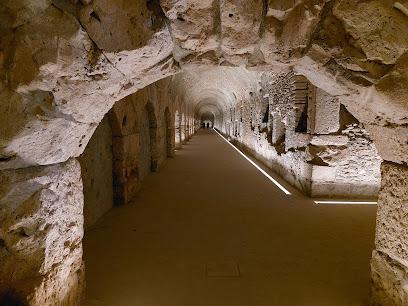
Lac de Thyez
Experience the tranquility and natural beauty of Lac de Thyez, a stunning alpine lake perfect for outdoor adventure and relaxation in the French Alps.
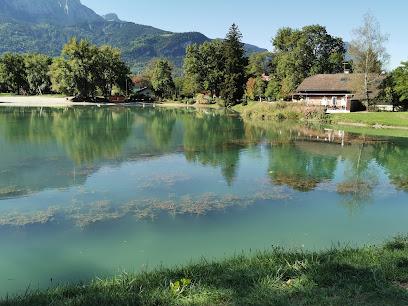
Mont-Blanc Natural Resort
Discover the breathtaking Mont-Blanc Natural Resort, a year-round destination for skiing, hiking, and stunning Alpine scenery in the heart of the French Alps.
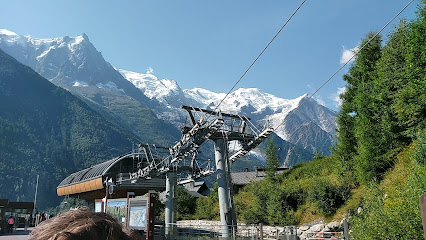
Lac Vert
Experience the breathtaking beauty of Lac Vert, a serene alpine lake in Passy, where emerald waters and majestic mountains await.
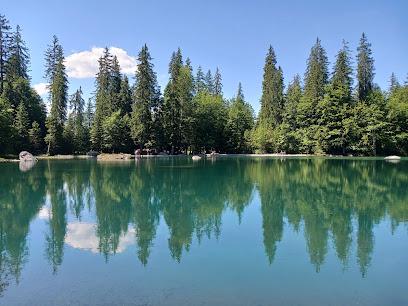
L' Arpette
Experience the charm of L'Arpette in Les Arcs, where exquisite cuisine meets stunning alpine views for an unforgettable dining experience.

Voga Goga
Discover Voga Goga in Bourg-Saint-Maurice for a delightful dining experience that combines local flavors and a cozy atmosphere amidst the stunning French Alps.

La Passerelle à Farinet
Discover La Passerelle à Farinet, an awe-inspiring bridge and hiking area in Saillon, Switzerland, where nature meets adventure.
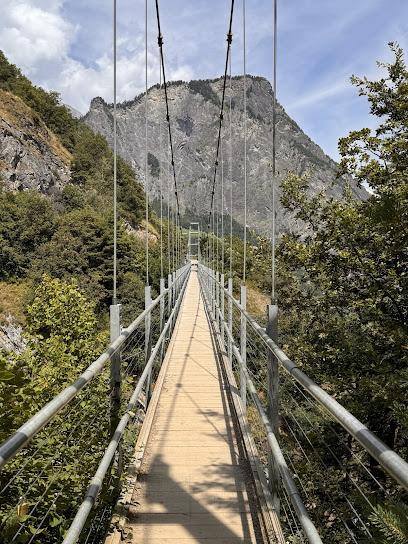
Courmayeur Mont Blanc Funivie S.p.A. - Cable Car Courmayeur
Discover unparalleled skiing and stunning views at Courmayeur Mont Blanc Funivie, where adventure meets breathtaking alpine beauty.
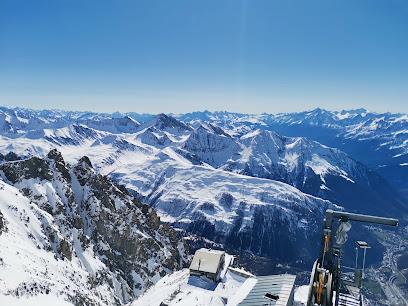
Musée des Cristaux - Espace Tairraz
Explore the enchanting world of crystals at Musée des Cristaux - Espace Tairraz in Chamonix-Mont-Blanc, where nature's wonders come to life.
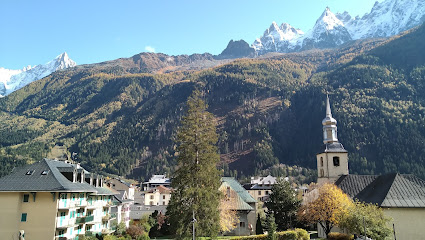
La jonction
Explore La Jonction, a stunning natural attraction in Chamonix, where glacial rivers meet in a breathtaking alpine landscape.
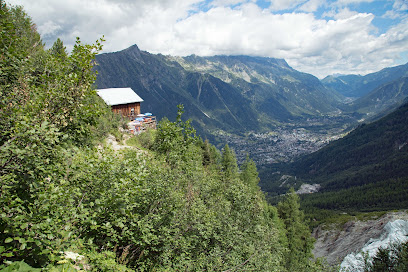
Essential places to dine
Josephine Restaurant
Experience exquisite French cuisine at Josephine Restaurant in Chamonix-Mont-Blanc—where culinary excellence meets breathtaking alpine beauty.
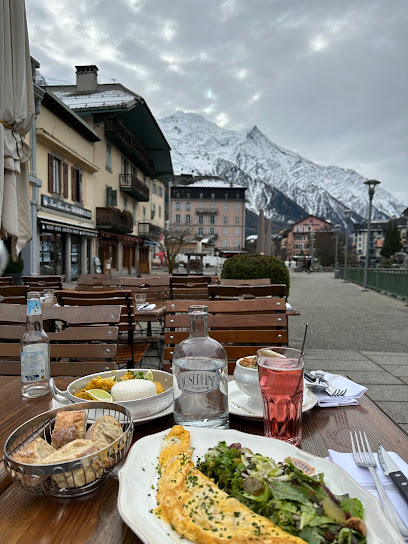
La Calèche
Experience authentic French cuisine at La Calèche in Chamonix-Mont-Blanc – where local flavors meet stunning alpine views.
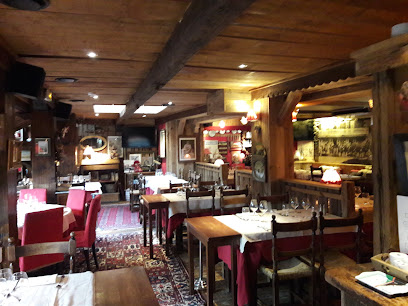
Le Monchu
Experience authentic fondue and raclette at Le Monchu - a culinary delight nestled in the stunning Chamonix-Mont-Blanc region.

La Tablée
Experience authentic French cuisine at La Tablée in Chamonix—where every dish tells a story amidst breathtaking alpine views.
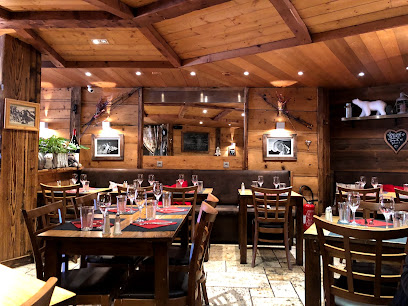
Omeletterie La Poêle
Discover Omeletterie La Poêle in Chamonix: where delectable omelets meet stunning mountain views for an unforgettable dining experience.
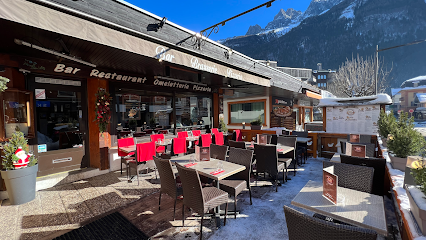
Le National
Experience the charm of French cuisine at Le National in Chamonix-Mont-Blanc - where every meal is a taste of tradition.
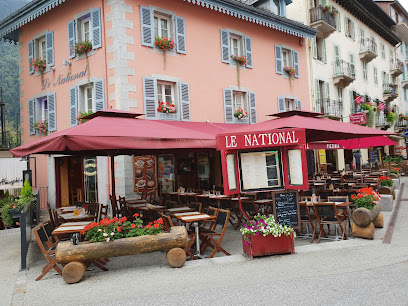
Bighorn Bistro
Experience diverse flavors at Bighorn Bistro in Chamonix – where American classics meet innovative fusion cuisine in a vibrant atmosphere.
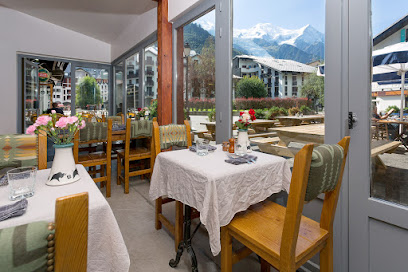
Le Comptoir des Alpes
Experience the best of Italian and French cuisine at Le Comptoir des Alpes with stunning views of Mont Blanc.
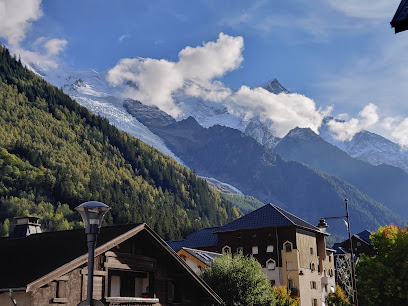
Restaurant La Moraine
Experience authentic French cuisine amidst stunning Alpine views at Restaurant La Moraine in Chamonix-Mont-Blanc.
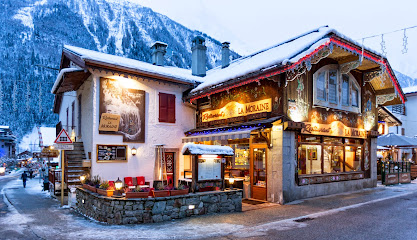
La Cabane Des Praz
Experience the best of French cuisine at La Cabane Des Praz in Chamonix—where exquisite flavors meet breathtaking alpine views.

Atmosphère
Experience exquisite French dining amidst breathtaking views at Atmosphère in Chamonix-Mont-Blanc.
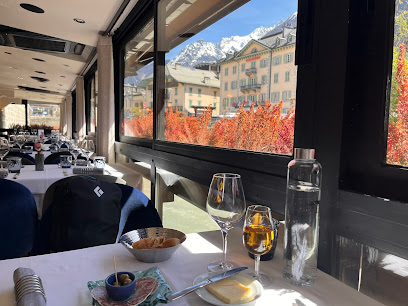
Chez Constant
Experience authentic French cuisine at Chez Constant - a cozy bistro in Chamonix offering delightful dishes and stunning mountain views.
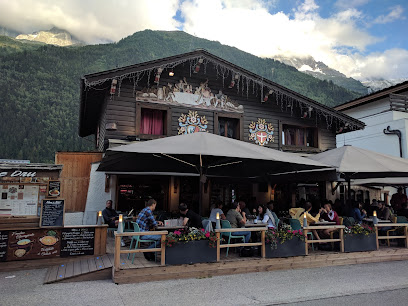
Le Bivouac
Experience authentic French cuisine at Le Bivouac in Chamonix - where mountain charm meets culinary excellence.
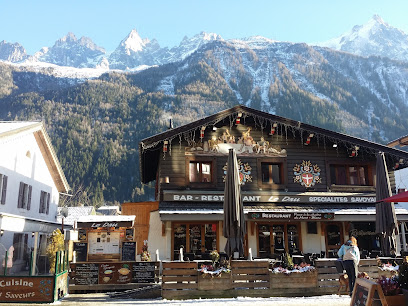
MUMMA
Discover the exquisite fusion of Asian and French cuisine at MUMMA in Chamonix - where every dish tells a story.
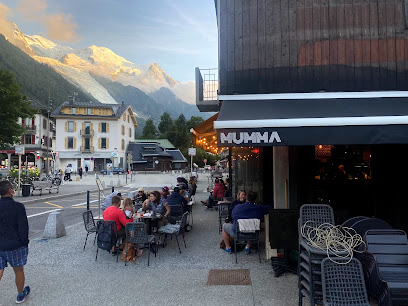
La P'tite Verte
Experience authentic French cuisine amidst the breathtaking scenery of Chamonix-Mont-Blanc at La P'tite Verte.
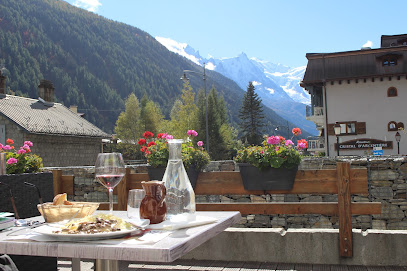
Markets, malls and hidden boutiques
Pollen Market CBD Shop Chamonix Mont Blanc
Explore Pollen Market CBD Shop in Chamonix Mont Blanc for top-quality CBD products amidst breathtaking alpine scenery.
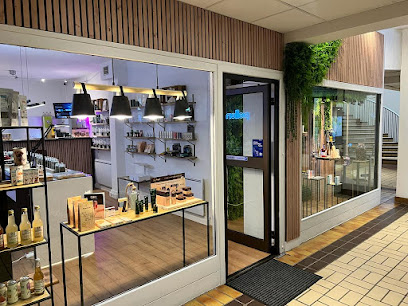
Patagonia Chamonix
Explore the heart of the French Alps at Patagonia Chamonix, your premier destination for quality outdoor gear and adventure inspiration.
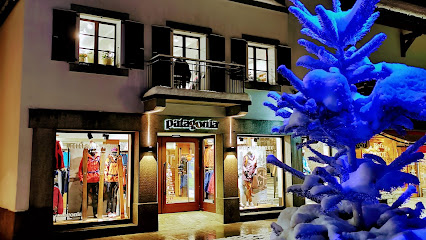
Odlo Store Chamonix
Explore the best outdoor gear at Odlo Store Chamonix, where adventure meets quality in the heart of the Alps.
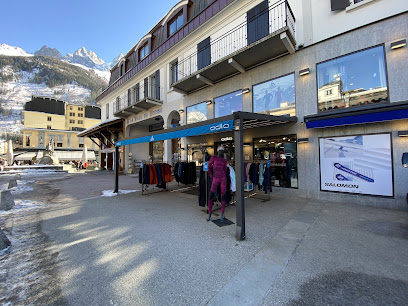
La Trace
Discover unique souvenirs at La Trace, the perfect place to find a piece of Chamonix to cherish forever.
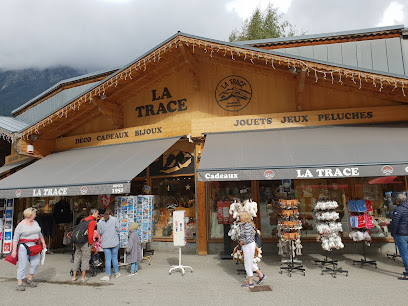
Mammut Store Chamonix
Discover the Mammut Store in Chamonix, your ultimate destination for premium outdoor gear and expert advice on mountain adventures.

Volcom Store Chamonix
Discover the spirit of alpine adventure at Volcom Store Chamonix, your destination for stylish outdoor apparel and accessories.
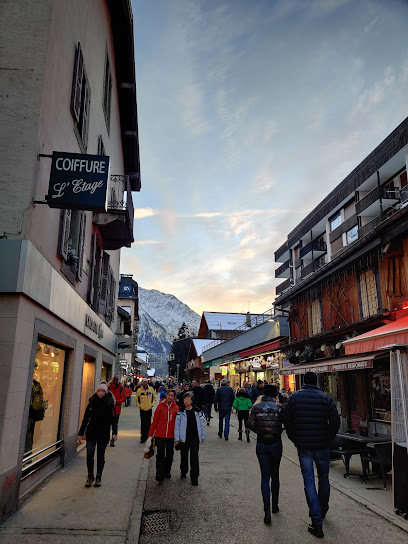
Columbia Sportswear Chamonix
Explore the great outdoors in Chamonix with Columbia Sportswear's premium outdoor apparel and footwear for every adventure.
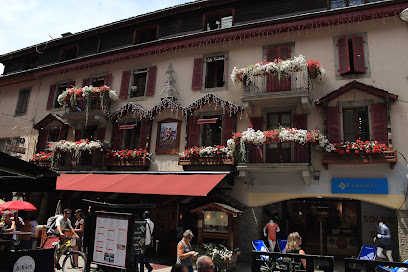
Millet Chamonix
Explore the best outdoor gear and clothing at Millet Chamonix, your one-stop shop for Alpine adventures and mountain sports.
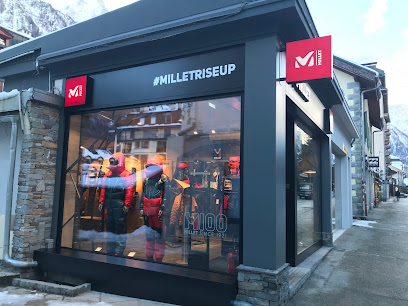
Swarovski Chamonix
Discover the elegance of Swarovski Chamonix, where luxury crystal gifts meet the stunning beauty of the Alps in a unique shopping experience.
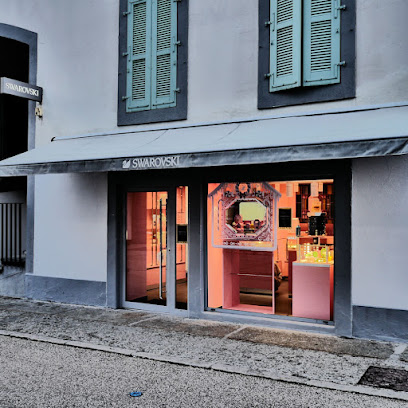
Moncler
Explore the elegance of Moncler in Chamonix, where luxury meets functionality in outdoor fashion.
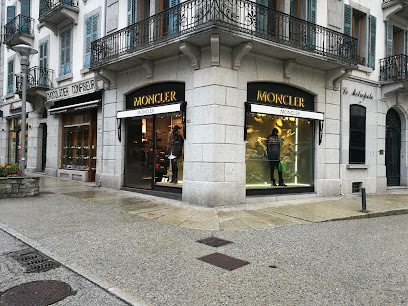
La Canadienne Chamonix
Explore La Canadienne Chamonix for exquisite outerwear and leather goods, perfect for embracing the alpine lifestyle with style and comfort.
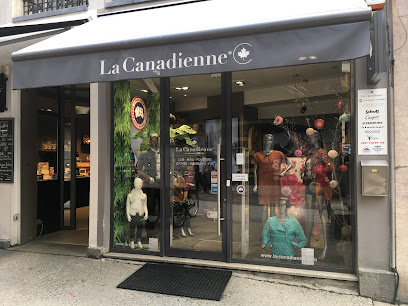
Helly Hansen Chamonix
Discover the ultimate sportswear store in Chamonix, offering top-quality gear for skiing, hiking, and outdoor adventures in the heart of the Alps.
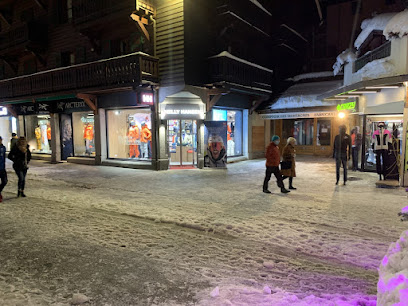
Zanetta Sarl
Discover unique fashion accessories at Zanetta Sarl, the chic store in Chamonix-Mont-Blanc that embodies alpine elegance and style.
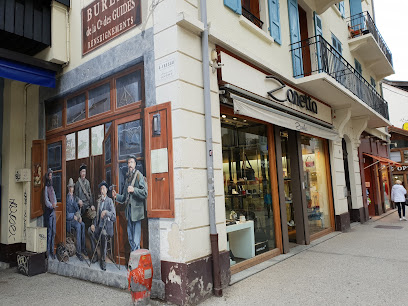
Napapijri Chamonix
Explore the fusion of fashion and adventure at Napapijri Chamonix, your go-to store for stylish outdoor apparel in the heart of the Alps.
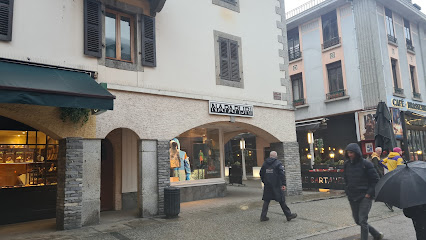
”Le Comptoir Des Montagnes“
Explore alpine fashion at Le Comptoir Des Montagnes, where style meets adventure in the heart of Chamonix-Mont-Blanc.
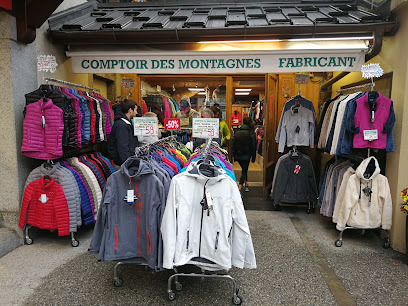
Essential bars & hidden hideouts
L'Hydromel
Experience the perfect blend of local flavors and vibrant atmosphere at L'Hydromel, a must-visit bar and restaurant in Chamonix.
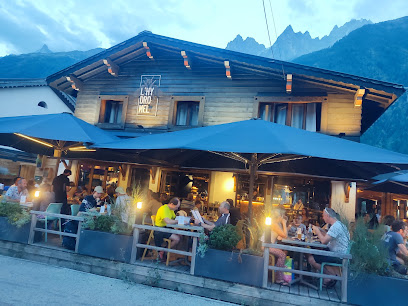
Bar'd Up
Experience the vibrant atmosphere of Bar'd Up, the perfect bar in Chamonix-Mont-Blanc to unwind and socialize after an adventure in the Alps.
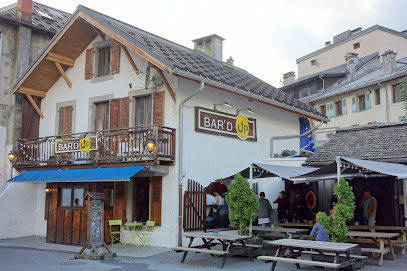
The Pub
Discover the charm of The Pub in Chamonix-Mont-Blanc, where great drinks and alpine hospitality meet in a cozy atmosphere.
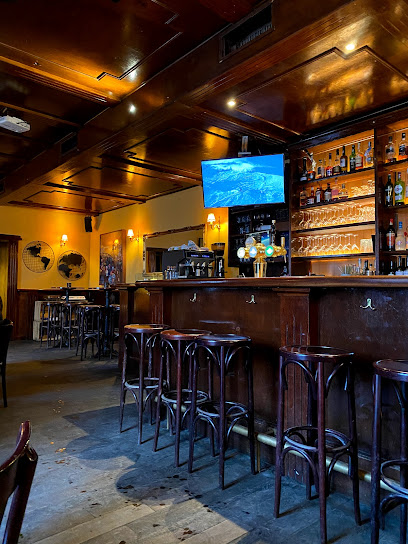
Beer O'Clock Chamonix
Discover the lively atmosphere and diverse beer selection at Beer O'Clock Chamonix, your perfect après-ski destination in the French Alps.
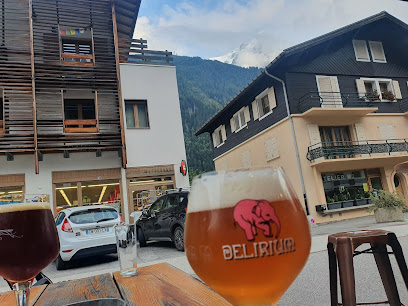
Le Privilège Chamonix
Discover the musical heart of Chamonix at Le Privilège, where live music meets a vibrant atmosphere for an unforgettable night.
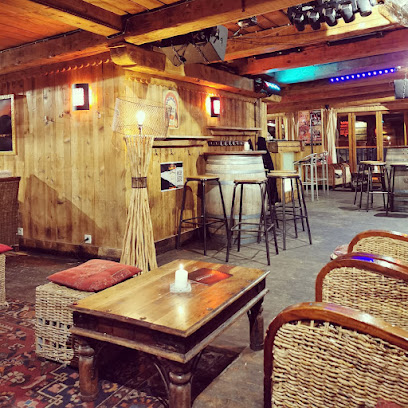
Les Caves Chamonix
Experience the vibrant nightlife at Les Caves Chamonix, a premier bar in the heart of the Alps, featuring exquisite drinks and live music.
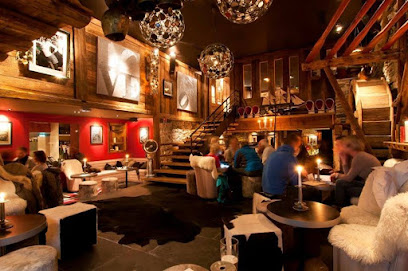
The Beckett & Wilde
Experience the vibrancy of Irish culture at The Beckett & Wilde, where live music, sports, and delicious cuisine come together in the heart of Chamonix.
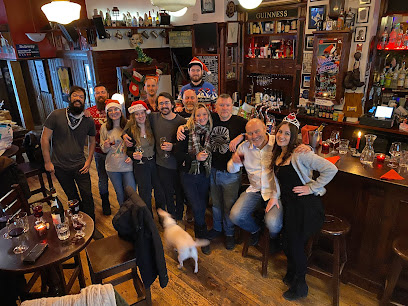
L’Alibi bar
Experience the vibrant cocktail culture at L’Alibi Bar in Chamonix, where handcrafted drinks and a lively atmosphere await every visitor.
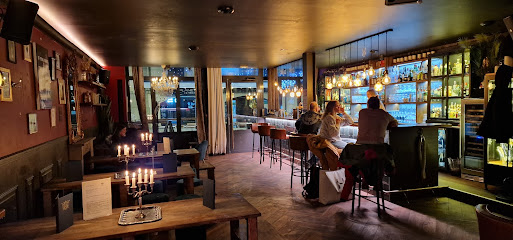
South Bar
Experience the vibrant nightlife of Chamonix at South Bar, where local brews and creative cocktails await amidst stunning alpine views.
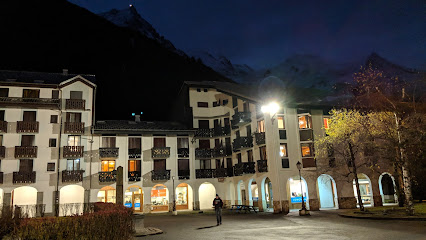
Barracuda Chamonix
Experience the vibrant nightlife of Chamonix at Barracuda, where innovative cocktails meet a lively atmosphere in the heart of the Alps.
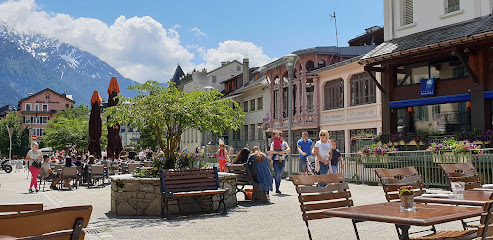
Bar Du Moulin Chamonix
Discover Bar Du Moulin, a cozy bar in Chamonix offering exquisite drinks and a vibrant atmosphere amidst stunning alpine scenery.
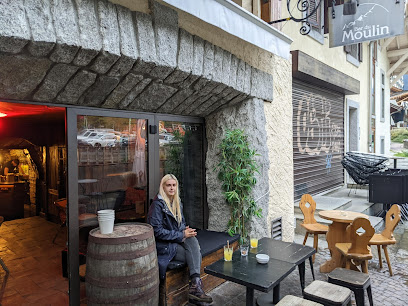
Bar Restaurant Les Planards
Experience the warm ambiance and delightful local cuisine at Bar Restaurant Les Planards, a culinary treasure in the heart of Chamonix.
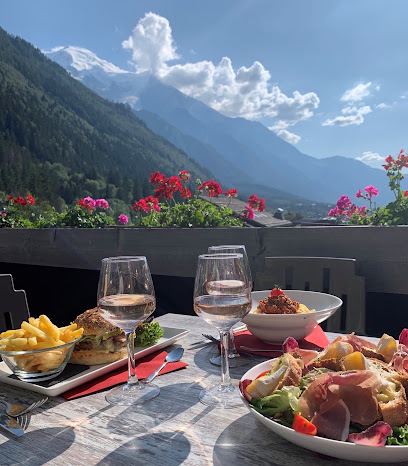
Le Bistrot des Cristalliers
Discover the exquisite charm of Le Bistrot des Cristalliers, a premier wine bar in Chamonix-Mont-Blanc offering a delightful selection of wines and local flavors.
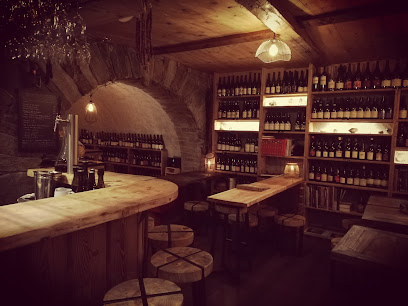
Le Cabanon Chamonix
Discover the vibrant atmosphere of Le Cabanon Chamonix, where relaxation meets the stunning beauty of the French Alps.
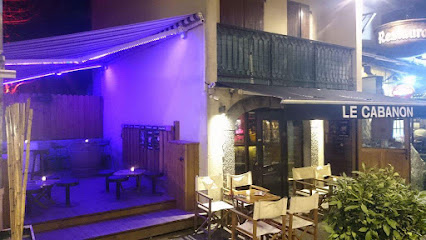
Epsylon - Chamonix
Discover Epsylon, the chic cocktail bar in Chamonix offering creative drinks and delectable tapas, perfect for unwinding after your mountain adventures.
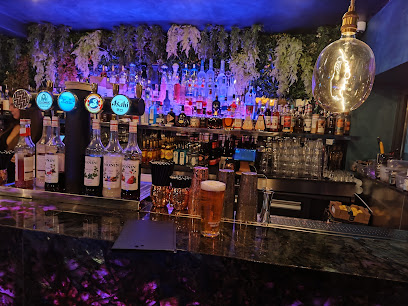
Local Phrases about Chamonix
-
- HelloBonjour
[bon-zhoor] - GoodbyeAu revoir
[oh ruh-vwahr] - YesOui
[wee] - NoNon
[nohn] - Please/You're welcomeS'il vous plaît/De rien
[seel voo pleh/duh ryehn] - Thank youMerci
[mehr-see] - Excuse me/SorryExcusez-moi/Désolé
[ehk-skew-zay mwah/dey-zoh-lay] - How are you?Comment ça va?
[koh-mohn sah vah] - Fine. And you?Bien. Et vous?
[byehn. ay voo] - Do you speak English?Parlez-vous anglais?
[pahr-lay voo ahn-glay] - I don't understandJe ne comprends pas
[zhuh nuh kohm-prahnd pah]
- HelloBonjour
-
- I'd like to see the menu, pleaseJe voudrais voir la carte, s'il vous plaît
[zhuh voo-dray vwahr lah kahrt, seel voo pleh] - I don't eat meatJe ne mange pas de viande
[zhuh nuh mahnj pah duh vyand] - Cheers!Santé!
[sahn-tay] - I would like to pay, pleaseJe voudrais payer, s'il vous plaît
[zhuh voo-dray pay-ay, seel voo pleh]
- I'd like to see the menu, pleaseJe voudrais voir la carte, s'il vous plaît
-
- Help!Au secours!
[oh suh-coor] - Go away!Allez-vous-en!
[ah-lay voo zahn] - Call the Police!Appelez la police!
[ah-puh-lay lah poh-lees] - Call a doctor!Appelez un médecin!
[ah-puh-lay uh mayd-sahn] - I'm lostJe suis perdu
[zhuh swee pair-doo] - I'm illJe suis malade
[zhuh swee mah-lahd]
- Help!Au secours!
-
- I'd like to buy...Je voudrais acheter...
[zhuh voo-dray zheh-tay...] - I'm just lookingJe regarde juste
[zhuh ruh-gahrd zhehst] - How much is it?Combien ça coûte?
[kohm-byen sah koot] - That's too expensiveC'est trop cher
[say troh shay] - Can you lower the price?Pouvez-vous baisser le prix?
[poo-veh voo beh-say luh pree]
- I'd like to buy...Je voudrais acheter...
-
- What time is it?Quelle heure est-il?
[kell uhr ay-teel] - It's one o'clockIl est une heure
[eel ay oon uhr] - Half past (10)Dix et demi
[dees ay dem-ee] - MorningMatin
[mah-tan] - AfternoonAprès-midi
[ah-pray mee-dee] - EveningSoir
[swahr] - YesterdayHier
[yehr] - TodayAujourd'hui
[oh-zhoor dwee] - TomorrowDemain
[duh-man] - 1Un
[uhn] - 2Deux
[duh] - 3Trois
[twa] - 4Quatre
[kat] - 5Cinq
[sank] - 6Six
[sees] - 7Sept
[set] - 8Huit
[weet] - 9Neuf
[nuff] - 10Dix
[dees]
- What time is it?Quelle heure est-il?
-
- Where's a/the...?Où est...?
[oo eh...] - What's the address?Quelle est l'adresse?
[kell eh lah-dress] - Can you show me (on the map)?Pouvez-vous me montrer (sur la carte)?
[poo-veh voo muh mohn-tray (soor lah kahrt)] - When's the next (bus)?Quand est le prochain (bus)?
[kahnd ay luh proh-shang (boos)] - A ticket (to ....)Un billet (pour ....)
[uhn bee-yay (poor)]
- Where's a/the...?Où est...?
History of Chamonix
-
The history of Chamonix dates back to pre-Roman times, with evidence of early settlement by Celtic tribes. The valley was officially recognized in the year 1091 when it was granted to the Benedictine monks of St. Michel de la Cluse. These monks played a pivotal role in the development of the region, establishing agricultural practices and small settlements. The natural beauty and challenging terrain of the Alps attracted early explorers, with Jacques Balmat and Michel-Gabriel Paccard achieving the first ascent of Mont Blanc in 1786, marking the beginning of modern mountaineering.
-
Chamonix's transformation into a winter sports destination began in the late 19th century. The construction of the Montenvers Railway in 1908 allowed easier access to the Mer de Glace glacier, drawing more tourists to the area. The establishment of the Chamonix Alpine Club in 1904 further promoted the region's potential for winter sports. The first Winter Olympic Games held in Chamonix in 1924 solidified its reputation as a premier destination for skiing, ice climbing, and other alpine sports.
-
During World War II, Chamonix found itself at the forefront of the French Resistance. The region's difficult terrain provided a natural refuge for resistance fighters. The Maquis, a group of French Resistance fighters, used the mountains and forests around Chamonix to launch guerrilla attacks against German forces. The bravery and resilience of the local population during this period is a significant chapter in Chamonix's history, contributing to the liberation of France.
-
Post-World War II, Chamonix experienced a boom in tourism, attracting visitors from around the globe. The construction of the Aiguille du Midi cable car in 1955 provided unparalleled access to the high Alps, further enhancing Chamonix's appeal. However, the increase in tourism also brought environmental challenges. In response, local authorities and environmental organizations have implemented various conservation measures to protect the natural beauty and ecological integrity of the region. Today, Chamonix is not only a hub for adventure sports but also a model for sustainable tourism and environmental stewardship.
Chamonix Essentials
-
Chamonix is located in the French Alps, near the borders of Switzerland and Italy. The nearest international airport is Geneva Airport, approximately 88 kilometers away. From Geneva, you can take a shuttle bus directly to Chamonix, which takes about 1.5 hours. Alternatively, you can take a train from Geneva to Chamonix, with a transfer at Martigny. If you are driving, Chamonix is accessible via the A40 motorway.
-
Chamonix has a well-developed public transportation system. The Mont Blanc Express train connects various towns in the Chamonix Valley and is a convenient option for getting around. Local buses are available and free with the guest card provided by your accommodation. Taxis and car rentals are also available, but parking can be limited in peak seasons. Walking and cycling are popular ways to explore the town and its surroundings.
-
The official currency in Chamonix is the Euro (EUR). Credit and debit cards are widely accepted in hotels, restaurants, and shops. ATMs are readily available throughout the town. It's advisable to carry some cash for smaller purchases, especially in more remote areas. Traveler's cheques are less commonly used and may not be accepted everywhere.
-
Chamonix is generally a safe destination for tourists, with low crime rates. However, petty theft, such as pickpocketing, can occur in crowded places and tourist hotspots. Avoid leaving your belongings unattended and be cautious in busy areas. There are no specific high-crime neighborhoods targeting tourists, but it's always best to stay vigilant and aware of your surroundings.
-
In case of emergency, dial 112 for immediate assistance. Chamonix has a local police station and medical facilities, including a hospital and pharmacies. It is recommended to have travel insurance that covers medical emergencies, especially if you plan to engage in outdoor activities like skiing or hiking. For minor health issues, pharmacies in Chamonix carry a wide range of over-the-counter medications.
-
Fashion: Do wear appropriate clothing for the weather and activities. Layering is key in a mountain environment. Avoid overly casual attire in upscale restaurants. Religion: Do respect local customs and traditions, especially when visiting churches. Public Transport: Do be respectful and give up your seat to elderly passengers. Don't eat or drink on public transport. Greetings: Do greet people with a friendly 'Bonjour'. A handshake is common in formal settings. Eating & Drinking: Do try local delicacies and accept food offerings graciously. Don't rush your meals; dining is a leisurely activity in France.
-
To experience Chamonix like a local, visit the weekly farmers' market to buy fresh produce and local specialties. Engage with residents, as they are often friendly and willing to share tips about the best spots and activities. Don't miss exploring lesser-known hiking trails and visiting local cafes for a taste of regional cuisine. For a unique experience, take the Aiguille du Midi cable car for stunning views of Mont Blanc.
Nearby Cities to Chamonix
-
Things To Do in Annecy
-
Things To Do in Vevey
-
Things To Do in Geneva
-
Things To Do in Lausanne
-
Things To Do in Zermatt
-
Things To Do in Murren
-
Things To Do in Thun
-
Things To Do in Interlaken
-
Things To Do in Turin
-
Things To Do in Grindelwald
-
Things To Do in Grenoble
-
Things To Do in Bern
-
Things To Do in Ascona
-
Things To Do in Locarno
-
Things To Do in Lyon



